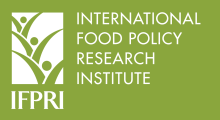Resource information
"In contrast to popular predictions of Africa’s worsening economic decline, recent research supports an alternative and more positive vision of Africa’s future. New political commitment and African ownership of the development agenda, combined with a renewed focus on and investments in smallholder-led agriculture, have the potential to halt or reverse the current downward spiral of hunger, poverty, environmental degradation, disease, and civil strife. Building on lessons learned from past policy and implementation mistakes, this policy brief argues that now is the time to address key pillars of growth to revitalize the agriculture sector.... [This brief is based on an IFPRI technical paper in support of USAID’s Agricultural Initiative to Cut Hunger in Africa (AICHA),] in which investments to support agricultural growth are planned for three subregions: East,West, and Southern Africa. Each regional action plan will link to and harmonize with national action plans in selected high-potential countries that are also expected to serve as nodes of agriculture-led growth within their subregions. All action plans will describe the process by which investment priorities and related analytical agendas will be developed, fine-tuned, and acted upon. USAID describes the action plans as documents that will include a 15-year vision of the initiative, specific programmatic thrusts for a five-year planning cycle, and annual work plans and targeted outputs. They are expected to be “rolling” planning documents that will also provide monitoring and evaluation information in accordance with a results framework established in the first action plan. Each plan will assess the likely impacts of the proposed investments on (1) overall economic and agricultural growth, (2) agricultural trade, (3) intraregional trade, (4) spillover effects through intraregional linkages in commodity and factor markets, and (5) regional growth, development, and hunger and poverty reduction."-- taken from Brief


